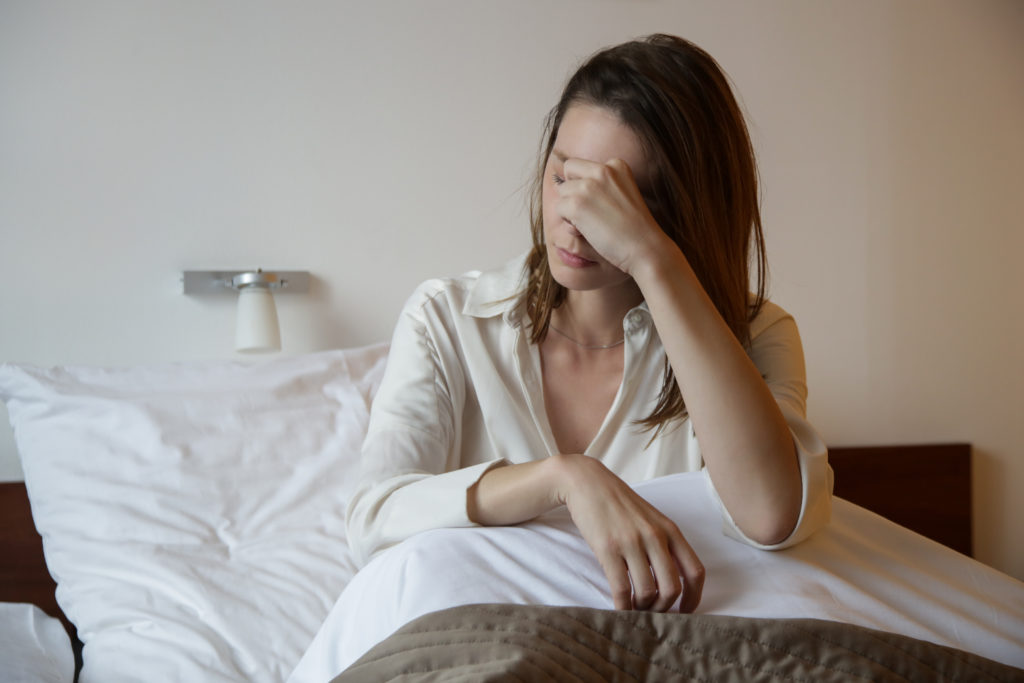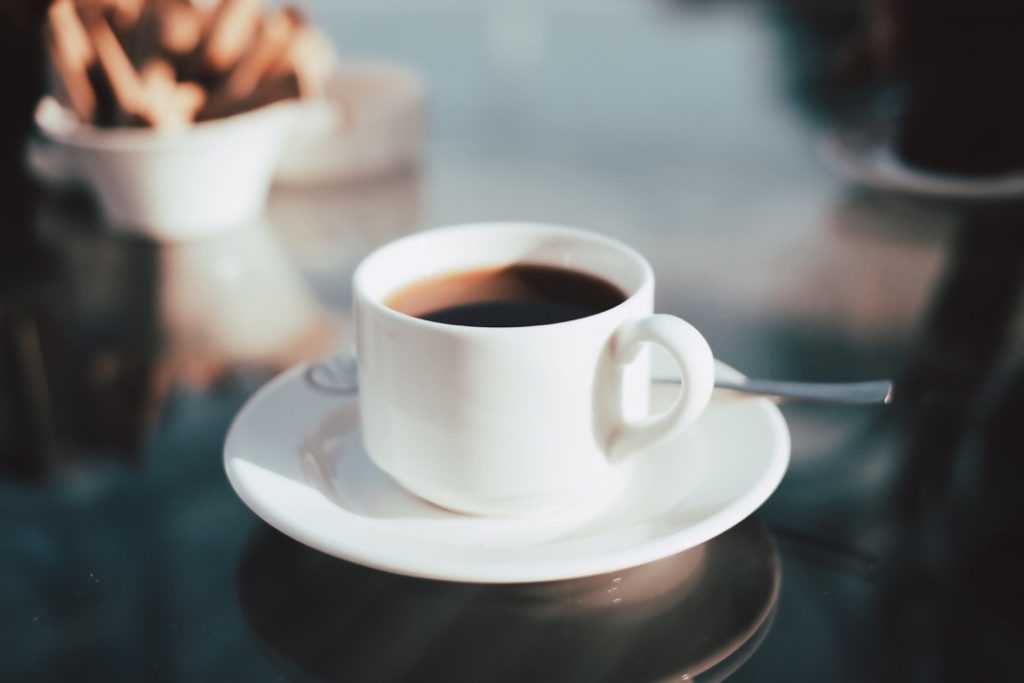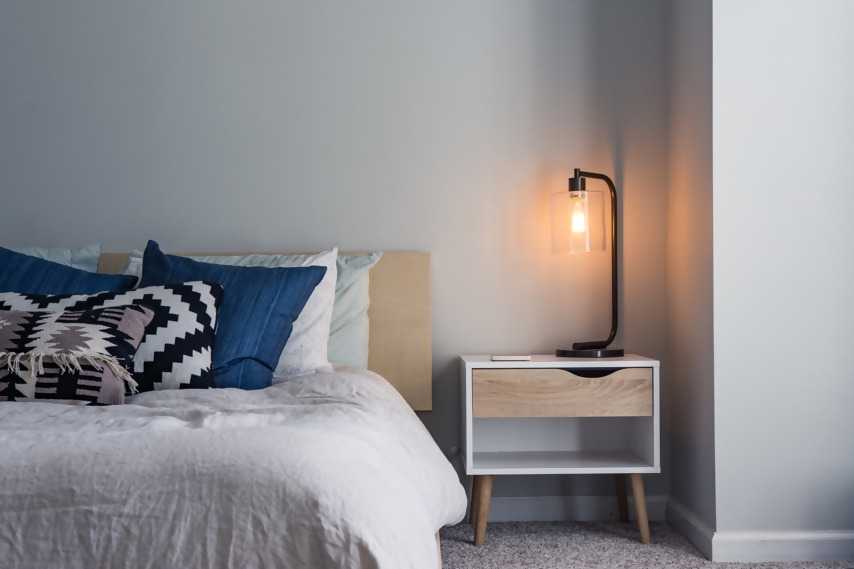How many times have you gone to bed making a mental list of everything you had to do the next day: waking up at 6:00 am to make breakfast, taking the kids to school, attending back-to-back meetings at work, running back home to make it to your kid’s baseball game, etc., only to wake up with a pounding headache?

Morning migraines are more common than people realize. According to the National Sleep Foundation, almost fifty percent of all migraines occur between four and nine o’clock in the morning, ruining your day before it even starts. Time after time, researchers have found links between sleep and migraines, particularly lack of sleep as a frequent migraine trigger.
But improving your sleeping habits is not as easy as it sounds. The Centers for Disease Control and Prevention estimates that one in three adults doesn’t get enough sleep, and migraine sufferers are even more likely to experience sleep disturbances.
The problem with our sleeping habits, experts explain, is that we aren’t consistent with them. The vast majority of people either don’t have or don’t stick to a sleep routine. A lack of routine leaves individuals with an erratic sleep schedule that the body cannot adapt to. Fortunately, with a little planning and persistence that can change.
These are five easy steps that you can do to get a better night’s sleep and improve your morning migraines:
Limit Your Caffeine Consumption
Everybody knows that drinking coffee right before bed is a one-way ticket to a sleepless night. But did you know that drinking that 5:00 pm espresso might also be tampering with your sleeping schedule? Caffeine is a stimulant, which is a type of drug characterized by increased activity in the central nervous system and the brain.

The short-term effects of caffeine are usually felt pretty quickly. Five to thirty minutes after drinking a cup of coffee or an energy drink, you’ll feel more energized and alert. But its long-term effects last longer, as caffeine’s half-life is about five hours.
The half-life of a substance is the time your body takes to reduce it to half of its original concentration. Since a regular 8 oz cup of brewed coffee can have up to 100 mg of caffeine, when you drink a cup at 5:00 pm you will still have around 50 mg of in your system by the time you go to bed. If you have trouble sleeping at night, limit yourself to no more than two cups of coffee per day and avoid drinking caffeinated beverages after 4:00 pm.
Create the Perfect Sleep Environment
From the moment you climb inside your bed to the moment you wake up the next morning, you spend 9 to 10 hours inside your sleeping environment. That’s over 3,000 hours over the course of a year and nearly one-third of your entire life! So, if your bedroom is uncomfortable and messy, your sleep quality will decline.

If you want to get the best night’s sleep possible and improve your morning migraines, you must see your sleeping environment as a sanctuary. The concept of a sleeping environment can vary from person to person. While for many of us our bedroom is the place where we rest each night, people who travel frequently may spend more time sleeping on hotel beds than on their own bed. But regardless of where you rest your head each night when you optimize that place for sleep, you lower your chances of waking up with a migraine. These are three essential factors to consider for improving your sleeping environment:
Lighting
Everybody has an internal clock, called a circadian rhythm, that manages their sleep/wake cycles. In humans, the circadian rhythm is controlled by a group of neurons located in a part of the brain called the hypothalamus, which is in constant communication with the eyes. Every day as the sun sets and it gets dark outside, the hypothalamus starts getting ready for sleep.
The problem is that artificial light can alter your circadian rhythm. Research has shown that taking your electronics to bed or sleeping with the TV on can signal your hypothalamus that is not bedtime yet. Avoid disrupting your internal clock by making sure your bedroom is as dark as possible when you are trying to doze off.
Temperature
How many times have you woken up in the middle of the night because you were either too hot or too cold? Temperature plays a fundamental role in your sleep patterns, with a cooler bedroom being preferred for optimal rest. Research suggests that the ideal temperature for sleep should be around 60 to 67 degrees, but remember to wear socks as cold feet tend to be very disruptive for sleep.
Noise
Any loud or sudden noises that jar you awake have negative effects on your sleeping patterns and increase your likelihood of waking up with a migraine. If you live near a busy street or in a noisy neighborhood, consider investing in a pair of high-quality earplugs or a white noise machine. Research shows that constant white noise can induce sleep and block out background sounds.
Consider a Natural Sleeping Aid
Some nights, no matter what we do, we just can’t sleep. But before you give up on the inevitability of waking up with a migraine, consider taking a natural supplement to help you reset your internal clock and ease you back to sleep. There are many research-backed, non-habit forming natural ingredients that can facilitate sleep including; valerian extract, melatonin, magnesium, zizyphus jujube extract and glycine.
Medical providers have known for over a century that there is an association between poor sleep and the frequency and intensity of migraine and other pain syndromes. When it comes to sleep, small adjustments can lead to big rewards. Sleep influences all aspects of life. Establishing or reestablishing healthy sleep patterns will help control migraines as well as support overall health and longevity.
Learn more about sleep and the risk of chronic disease as well as natural options for promoting deep sleep. Download Sleep/Insomnia White Paper.






